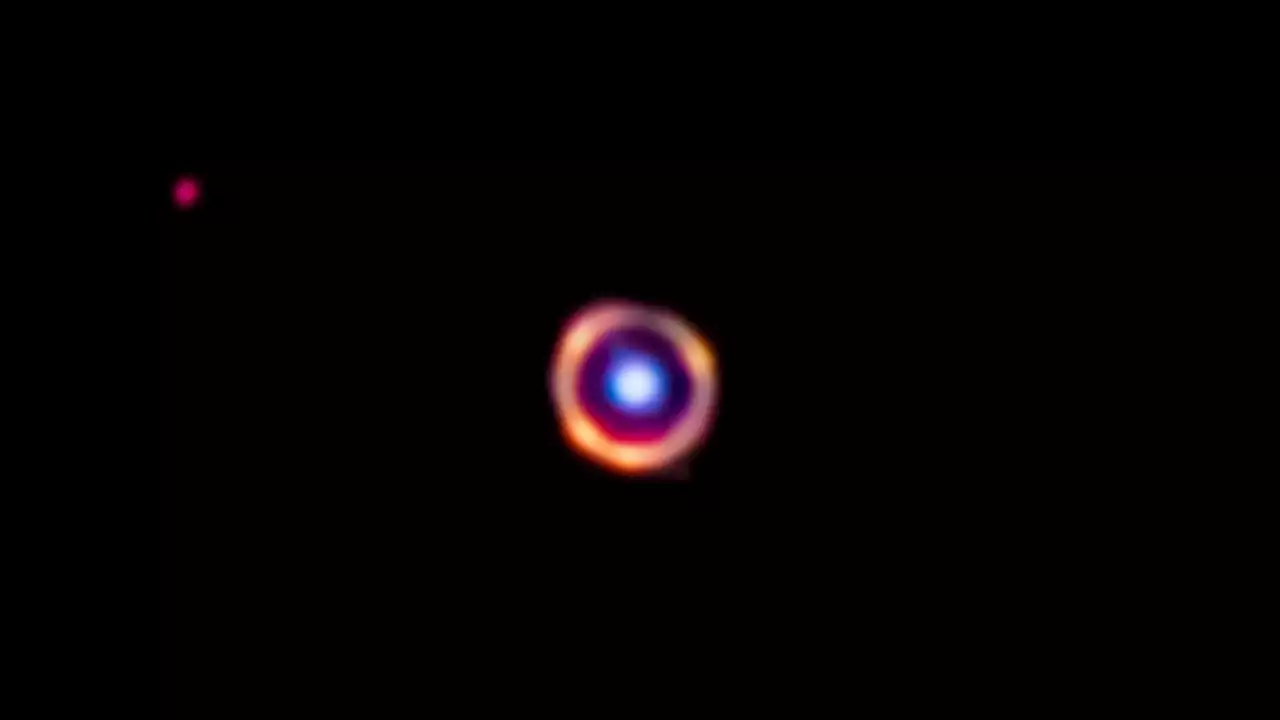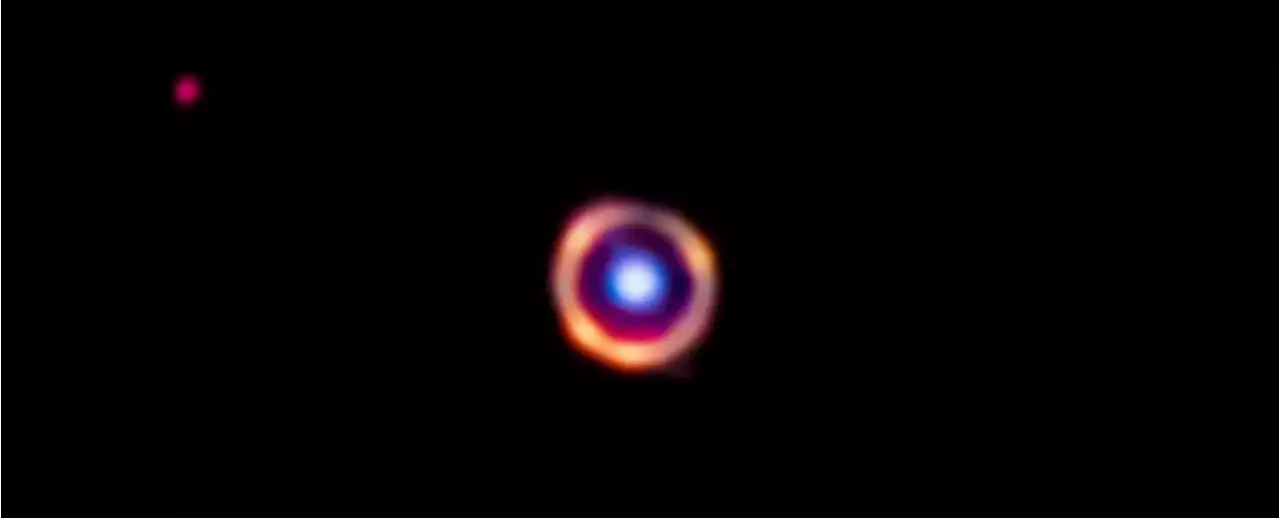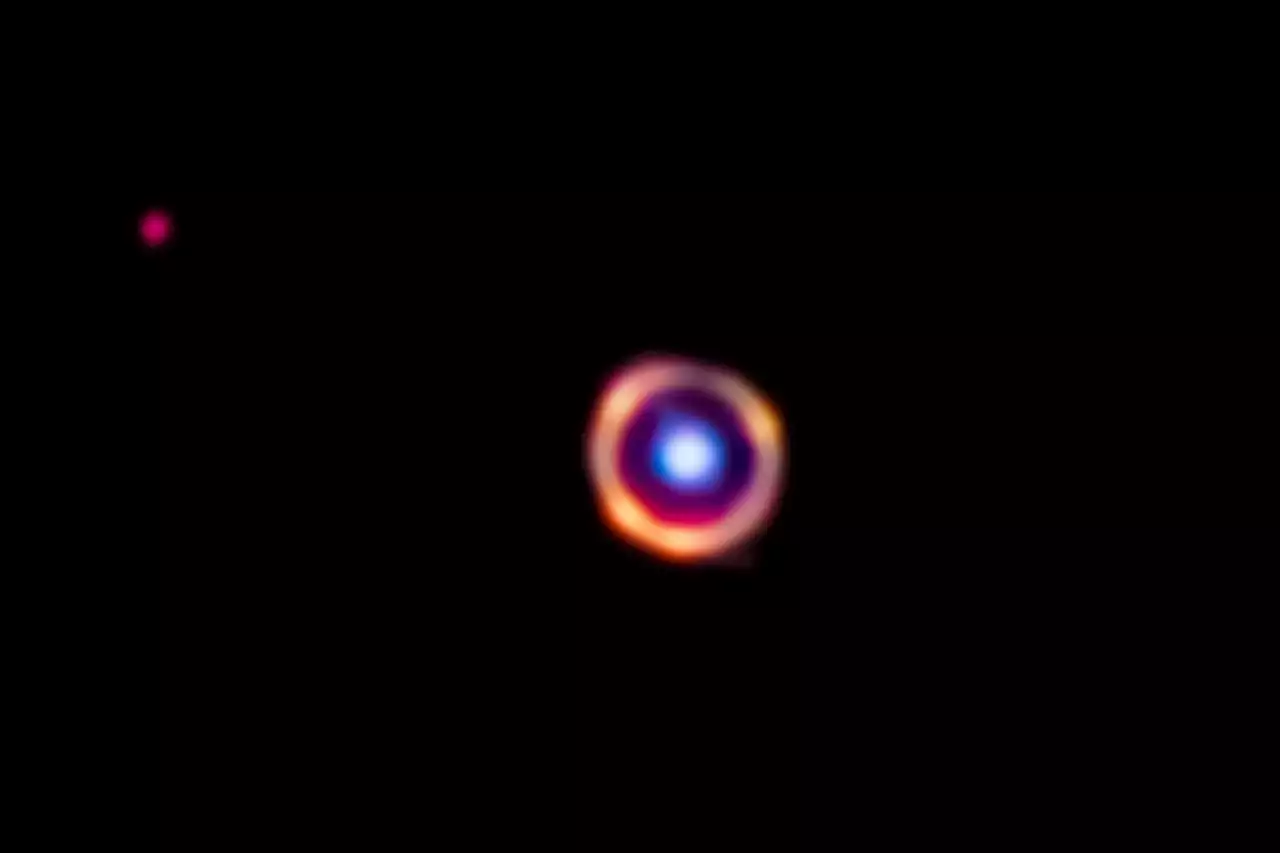Chock up another science victory for the James Webb Space Telescope. It spotted PAHs in a distant galaxy from the dawn of time.
Finding PAHs in a distant, ancient galaxy required advanced technology, skill, and some fortuitous luck. The JWST provided the technology with its keen infrared observing capabilities, and a foreground galaxy only 3 billion light years away lined up with the distant galaxy provided the luck. It’s lined up just right and acts as a gravitational lens, amplifying the light from the distant galaxy.
“By combining Webb’s amazing capabilities with a natural ‘cosmic magnifying glass,’ we were able to see even more detail than we otherwise could,” said lead author Spilker. “That level of magnification is actually what made us interested in looking at this galaxy with Webb in the first place because it really lets us see all the rich details of what makes up a galaxy in the early universe that we could never do otherwise.
“Thanks to the high-definition images from Webb, we found a lot of regions with smoke but no star formation and others with new stars forming but no smoke,” Spilker said. It took some sleuthing to differentiate between the infrared light from PAHs and from larger dust grains. Dust grains absorb about half of the radiation from stars throughout the Universe’s history and emit it as infrared light. All that infrared light from simple dust can cloud the picture of early galaxies.
This artist’s conception symbolically represents complex organic molecules, known as polycyclic aromatic hydrocarbons, seen in the early universe. These large molecules, comprised of carbon and hydrogen, are considered among the building blocks of life. NASA’s Spitzer Space Telescope detected these molecules in galaxies when our universe was about 3.5 billion years old. Now the JWST has found them even further back in time.
United States Latest News, United States Headlines
Similar News:You can also read news stories similar to this one that we have collected from other news sources.
 JWST spots the most distant ‘smoke’ molecules ever seen in spaceThe presence of the molecules in an early galaxy means it must have pumped out stars at a furious pace, researchers say.
JWST spots the most distant ‘smoke’ molecules ever seen in spaceThe presence of the molecules in an early galaxy means it must have pumped out stars at a furious pace, researchers say.
Read more »
 James Webb Space Telescope spies earliest complex organic molecules in the universeThe chemicals reside within a galaxy that formed when the universe was about 10% of its current age.
James Webb Space Telescope spies earliest complex organic molecules in the universeThe chemicals reside within a galaxy that formed when the universe was about 10% of its current age.
Read more »
 Cosmic Smoke Signals: James Webb Telescope Discovers Organic Molecules in Distant GalaxyAstronomers have found complex organic molecules in a galaxy more than 12 billion light-years away from Earth. Using NASA’s James Webb Space Telescope, an international team of astronomers detected complex organic molecules, akin to Earth's smoke, soot, and smog, in a galaxy 12 billion light-year
Cosmic Smoke Signals: James Webb Telescope Discovers Organic Molecules in Distant GalaxyAstronomers have found complex organic molecules in a galaxy more than 12 billion light-years away from Earth. Using NASA’s James Webb Space Telescope, an international team of astronomers detected complex organic molecules, akin to Earth's smoke, soot, and smog, in a galaxy 12 billion light-year
Read more »
 Webb detects universe's earliest complex organic molecules 12 billion light-years from EarthThe team discovered the presence of a type of molecule known as polycyclic aromatic hydrocarbon, thanks to the gravitational lensing technique in the telescope.
Webb detects universe's earliest complex organic molecules 12 billion light-years from EarthThe team discovered the presence of a type of molecule known as polycyclic aromatic hydrocarbon, thanks to the gravitational lensing technique in the telescope.
Read more »
 Webb telescope detects organic molecules in distant galaxy | CNNAstronomers have detected the most distant known organic molecules in the universe using the James Webb Space Telescope. It’s the first time Webb has detected complex molecules in the distant universe.
Webb telescope detects organic molecules in distant galaxy | CNNAstronomers have detected the most distant known organic molecules in the universe using the James Webb Space Telescope. It’s the first time Webb has detected complex molecules in the distant universe.
Read more »
 Complex Molecules Detected in Ancient Galaxy Near The Dawn of TimeIn a galaxy hanging out in the early Universe less than 1.5 billion years after the Big Bang, the James Webb Space Telescope has made an astonishing detection.
Complex Molecules Detected in Ancient Galaxy Near The Dawn of TimeIn a galaxy hanging out in the early Universe less than 1.5 billion years after the Big Bang, the James Webb Space Telescope has made an astonishing detection.
Read more »
